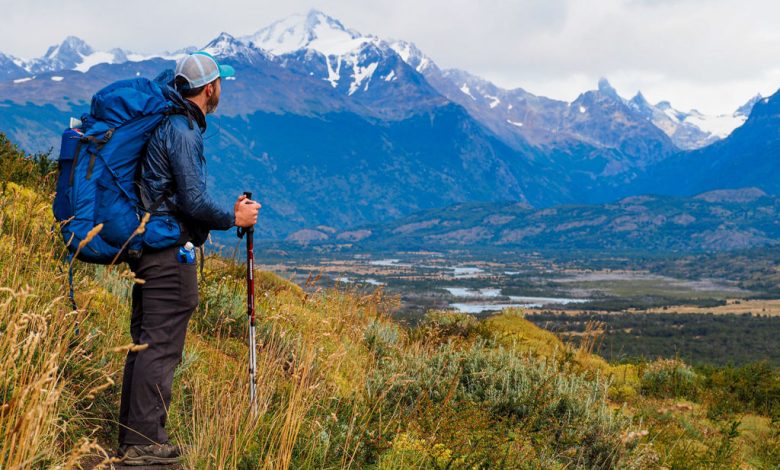Alaska Backpacking Tips
Looking for Alaska backpacking tips? That’s cool. Hiking in Alaska is a fantastic way to see some of the most beautiful scenery on earth.
This article will provide you with tips for packing for a hike in Alaska, including advice on clothing, food, and gear.
Thereby, if you’re thinking about heading into the wilderness for a weekend or longer, here are some tips to help make your trip as smooth as possible.
What to Pack-Backpacking Tips
When packing for a backpacking trip in Alaska, it’s important to remember the climate and terrain. Here are some tips to help you fill appropriately:
1. Clothing
What to wear while backpacking in Alaska? This question is often asked by people who are new to the activity and confused about choosing their clothes but no worries.
The answer, however, is not always straightforward. There are a few things to consider when choosing what to wear while hiking in Alaska.
The first thing to take into account is the climate. Alaska is known for its cold weather and harsh conditions.
Hiking in the summer can be pretty pleasant, with temperatures reaching the 70s or 80s.
However, the winters can be freezing, with temperatures regularly dropping below 0 degrees Fahrenheit.
Therefore, it is important to dress in layers to adjust your clothing as needed depending on the temperature.
In addition to the weather, it is important to consider the terrain you will be hiking on.
Pack clothing that will keep you warm and dry, even in wet and cold weather. Base layers, fleece jackets, waterproof shells, and hats and gloves are essential.
2. Footwear
Before your next backpacking trip in Alaska, ensure you are adequately outfitted with the proper footwear.
While many people think that any old shoes will do, this is not true.
Depending on the terrain you’ll be covering and the weather conditions, you’ll need shoes that provide stability, traction, and insulation.
Boots are a better option than sneakers for backpacking in Alaska.
They provide more stability on uneven terrain and offer more protection against cold and wet weather.
Ensure your boots are well-insulated, waterproof, and have good traction to stay safe on icy or slippery paths.
If you’re not used to wearing boots, it may take a little time to get used to them.
Be sure to break them in before your trip by wearing them around town for a few days beforehand.
3. Food & Water
Pack extra food and water, especially if you plan to go hiking in a remote area. Food and water are essential when preparing for a backpacking trip in Alaska.
It is important to pack enough food and water to sustain you during your journey and pack food that will be lightweight and easy to digest.
Dehydrated meals are ideal for backpacking trips, as they are light and provide plenty of energy.
In addition, make sure you pack plenty of snacks such as trail mix, granola bars, or dried fruit.
When it comes to water, it is essential to pack a filter or purifier in case you come across any streams or lakes while hiking.
If you cannot find a source of clean water, you will quickly run out of hydration if you do not bring along a way to purify it.
Additionally, be sure to bring along a lot of water – at least two liters per person per day.
- Additionally, take Cooking Supplies:
When camping, you’ll need to cook your food over a campfire.
Ensure all the necessary cooking supplies, including pots, pans, utensils, and spices.
You may also want to pack a cooler filled with food and drinks.
4. Rain Gear & Essentials
Be prepared for all types of weather by packing rain gear, sunscreen, sunglasses, and a hat. Gear up with the proper rain gear when backpacking in Alaska.
Rain can quickly turn a pleasant hike into a wet, cold, and miserable experience. Make sure to bring a jacket, pants, and boots that are waterproof and keep you warm and dry.
A poncho or raincoat is also suitable for keeping your upper body dry. Pack a hat and gloves to keep your head and hands warm, and bring extra clothes if you know rain is in the forecast.
5. Light Weight Items
When packing for a backpacking trip to Alaska, remember that you must carry everything.
Pack lightweight items that will be easy to carry with you on your hike. Try to avoid packing bulky items that will weigh you down.
Keep your load as light as possible by packing only the essentials. Here are some tips for packing light:
- Choose lightweight gear. Many great options are available these days, so there is no need to carry heavy gear.
- Pack only what you need. This may mean leaving behind some of your favorite items, but they can be easily replaced once you get to town.
- Choose multi-purpose items whenever possible. For example, a single thing can be a tent and a sleeping bag.
- Make sure your pack is well-fitted and comfortable to wear so you won’t be tempted to overload it with unnecessary extras.
- Plan and think about what you might need during your trip.
6. Map & Navigation
One of the best ways to enjoy Alaska’s natural beauty is by going on a backpacking trip.
However, before you hit the trails, make sure you are familiar with using a map and compass.
Even if you’re not planning on venturing too far off the beaten path, it’s still a good idea to know how to navigate in case something unexpected happens.
In addition to knowing how to use a map and compass, it’s also important to be familiar with the terrain.
Study the map closely and identify potential hazards, such as cliffs or rivers.
Also, be aware of which season you’re traveling in and what kind of weather conditions you might encounter.
If you’re new to backpacking, it might be a good idea to go on a guided trip first.
Plan and research the areas you’ll be hiking to know what supplies and gear you’ll need.
7. Camping Essentials
The first item on the list is a tent. Make sure to choose a tent that’s big enough for your needs, and check the weather forecast before you go camping to pack the correct tent type.
You’ll also need a sleeping bag, preferably one rated for the climate where you’ll be camping.
8. First Aid & Safety
When you are out on an Alaska backpacking trip, one of the most important is to always carry a first-aid kit with you.
Make sure it is stocked with supplies for treating common injuries, such as cuts, blisters, and insect bites.
Tips for a Successful Trip
The best way to see Alaska is on foot, and there are plenty of trails to choose from.
Whether you’re a beginner or an experienced backpacker, these tips will help make your trip successful.
1) Plan your route carefully. There are a lot of territories to cover in Alaska, so be sure to pick a route that matches your skill level and time frame.
2) Always carry a map and compass, even if using a GPS. Things can go wrong quickly in the backcountry, and you don’t want to be lost without supplies.
3) Make sure you have the proper gear for the conditions. In summer, temperatures can soar into the 90s during the day, then drop below freezing at night. Be prepared for all types of weather.
4) Drink plenty of water – even if you’re not thirsty.
Safety Precautions
When planning a trip to Alaska, it is important to be aware of the potential dangers and take necessary precautions.
One of the biggest concerns is dealing with the cold weather.
Make sure to dress in layers and bring plenty of warm clothing, including a hat and gloves.
It is also important to stay hydrated, so drink plenty of water and avoid drinking alcohol or caffeine.
Another concern is the wildlife. Be aware of your surroundings and never approach animals, as they may be dangerous.
Bears are common in Alaska, so learn how to avoid encounters with them and what to do if you encounter one.
Finally, be aware of the potential for avalanches and other dangerous weather conditions.
Plan your route carefully, and always let someone know where you are going and when you expect to return.
Let’s Go Hiking
In conclusion, backpacking in Alaska is a fantastic experience that should not be missed, but it’s essential to be prepared and research well.
Following the tips in this article, you can make the most of your trip and have a safe and enjoyable time.
So what are you waiting for? Start planning your Alaskan backpacking adventure today!





